Webster and the Supreme Court
Within six days of the New Hampshire Court decision, Daniel Webster wrote to President Francis Brown offering to represent the College before the Supreme Court and to retain the services of Joseph Hopkinson, a Philadelphia lawyer with significant legal experience. The question was how best to make the argument before the Supreme Court. Webster felt strongly that the case should be made broadly and not simply limited to the question of whether the New Hampshire court’s decision violated the Contracts Clause of the Constitution. The Contracts Clause stipulates that no state shall pass any bill or law impairing the obligation of contracts. Judge William Richardson, of the New Hampshire Superior Court, had stated in his opinion that the College was a public corporation and thus it fell under the control of the legislature. Instead of just focusing on this question, Webster advocated for an approach that would draw heavily on English common law as precedent and argued that the College was a private charitable corporation.
Previous: The New Hampshire Case
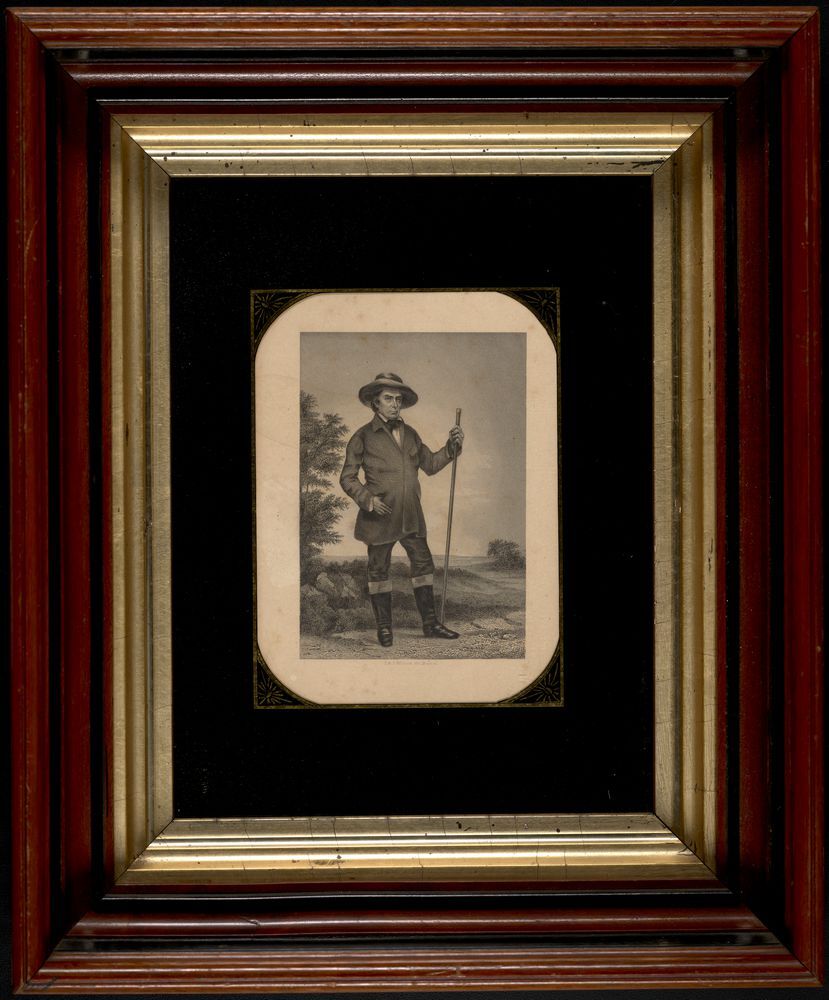
Engraving of Daniel Webster by John Angel Joseph Wilcox, made from an original painting by Joseph Ames.
Engraving of Daniel Webster by John Angel Joseph Wilcox, made from an original painting by Joseph Ames.
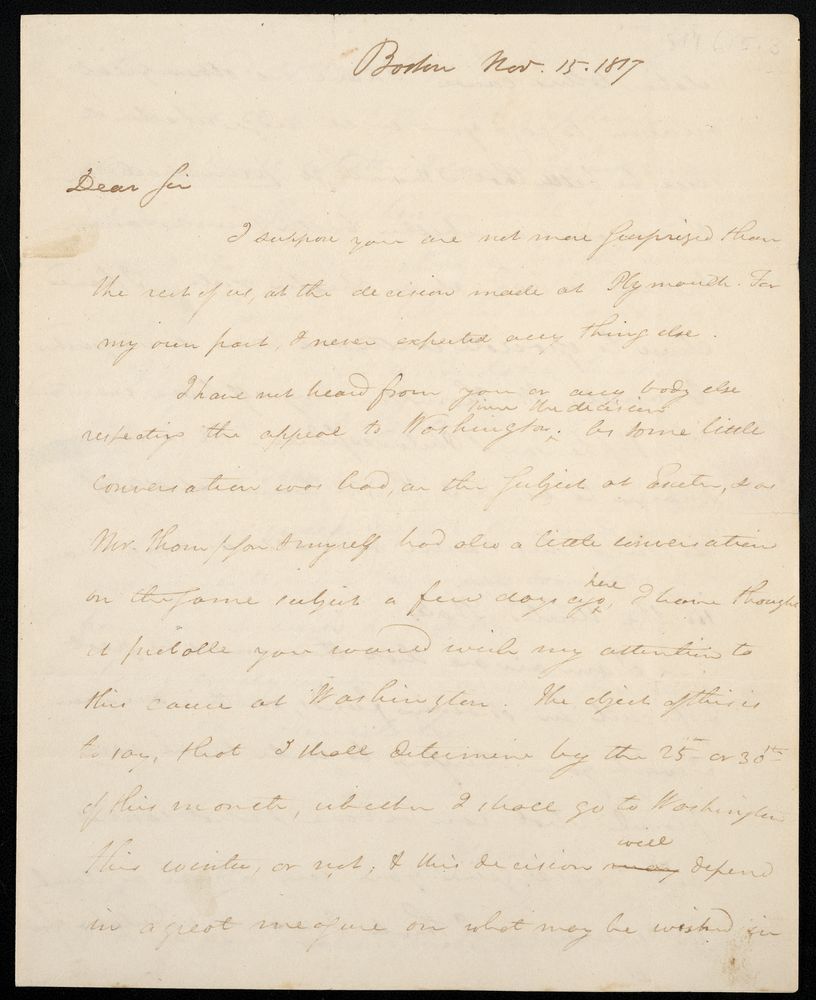
Daniel Webster to Francis Brown, 1817
Nine days after the New Hampshire court decided the case against the College, Daniel Webster wrote to President Brown offering to help the College with the case before the Supreme Court and engaging Joseph Hopkinson as co-counsel.
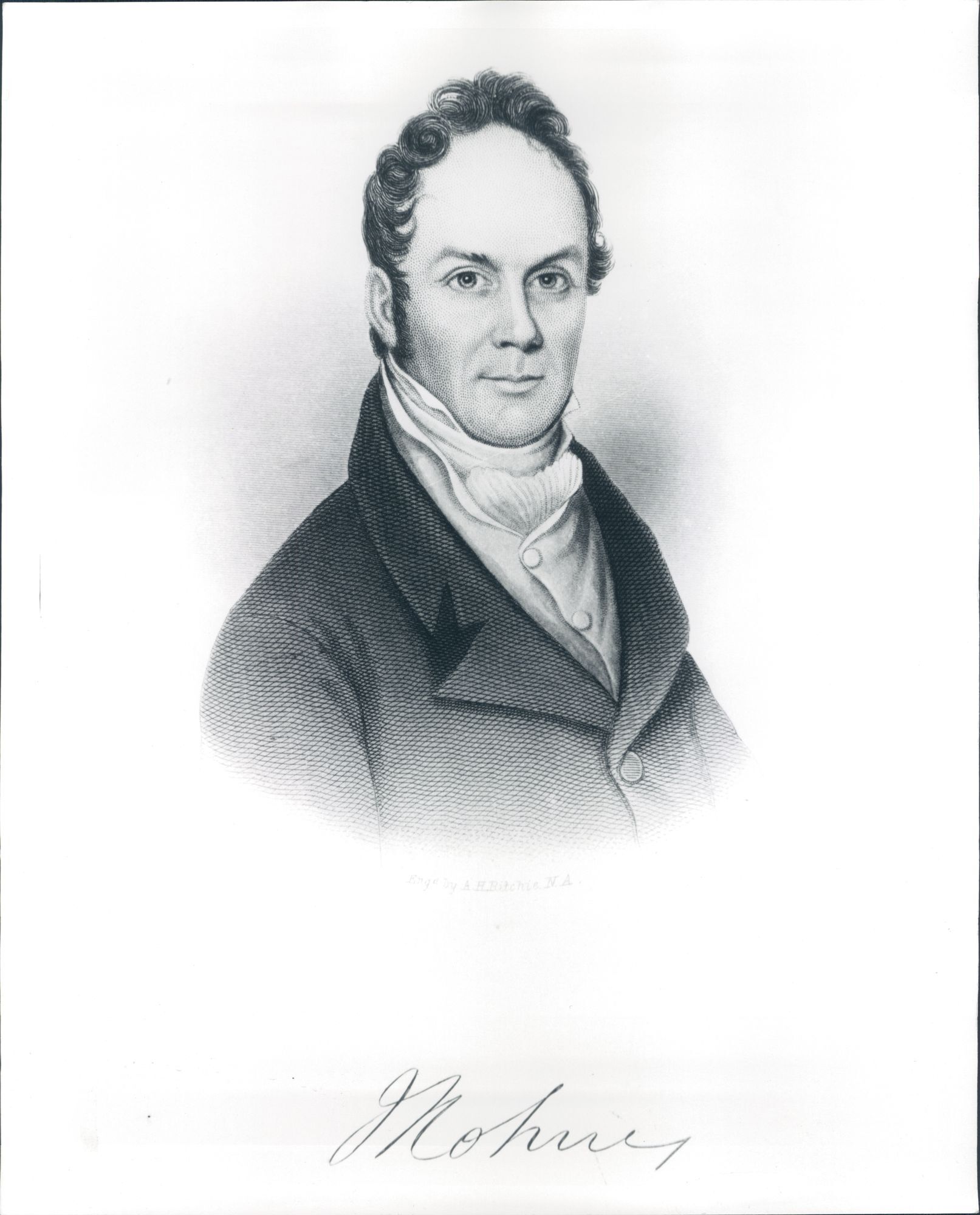
“Dartmouth College Case Supreme Court Judges” Photographic File
The University hired John Holmes, a Massachusetts Congressman with a reputation for vitriolic political debate, to represent them. Holmes was of the opinion that Webster would stick to the constitutional issue and not approach the argument more broadly. At the urging of concerned supporters, William Allen, the President of the University, hired William Wirt as co-counsel. Wirt believed that Webster would take on the full range of arguments. But, Wirt was plagued by ill health, and his role as United States Attorney General did not leave him much time to press this argument.
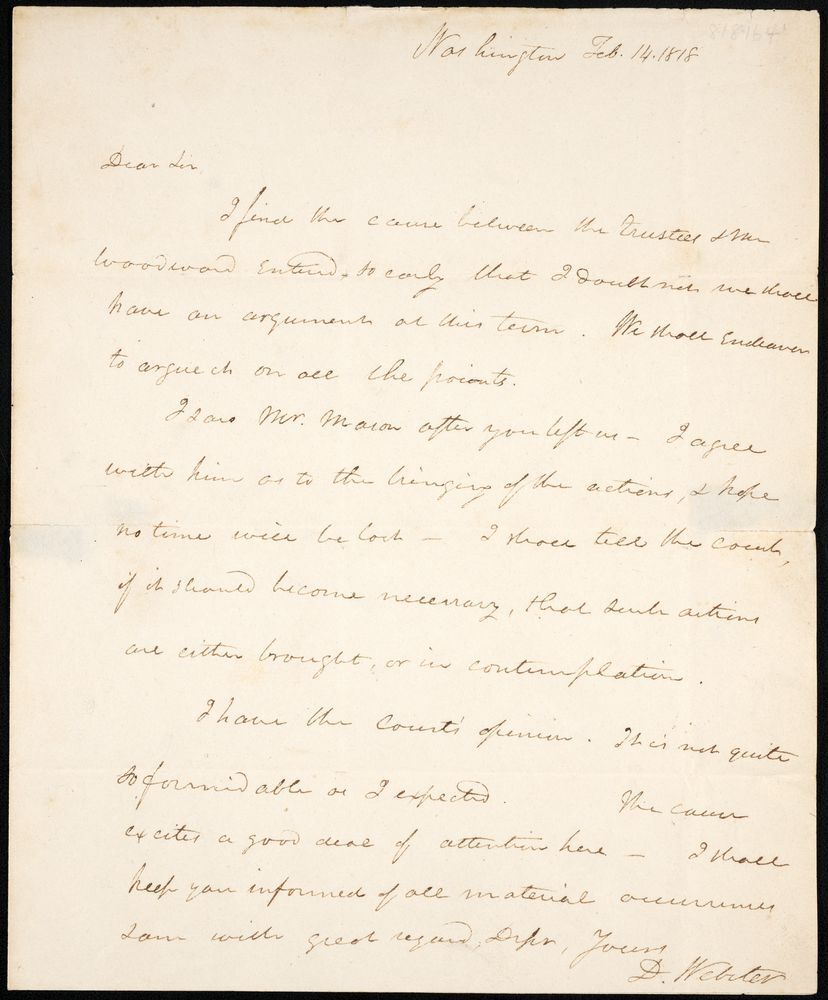
Daniel Webster to Francis Brown, 1818
Webster writes to President Francis Brown to tell him that rather than focus on the Constitutional questions, “We shall endeavor to argue on all the points.” This would turn out to be an important and key strategy to the outcome of the case as the University’s counsel settled on addressing only the narrow constitutional question related to contract law enshrined in Article I, section 10, clause 1. which prohibits a state from passing any law that “impairs the obligation of contracts”
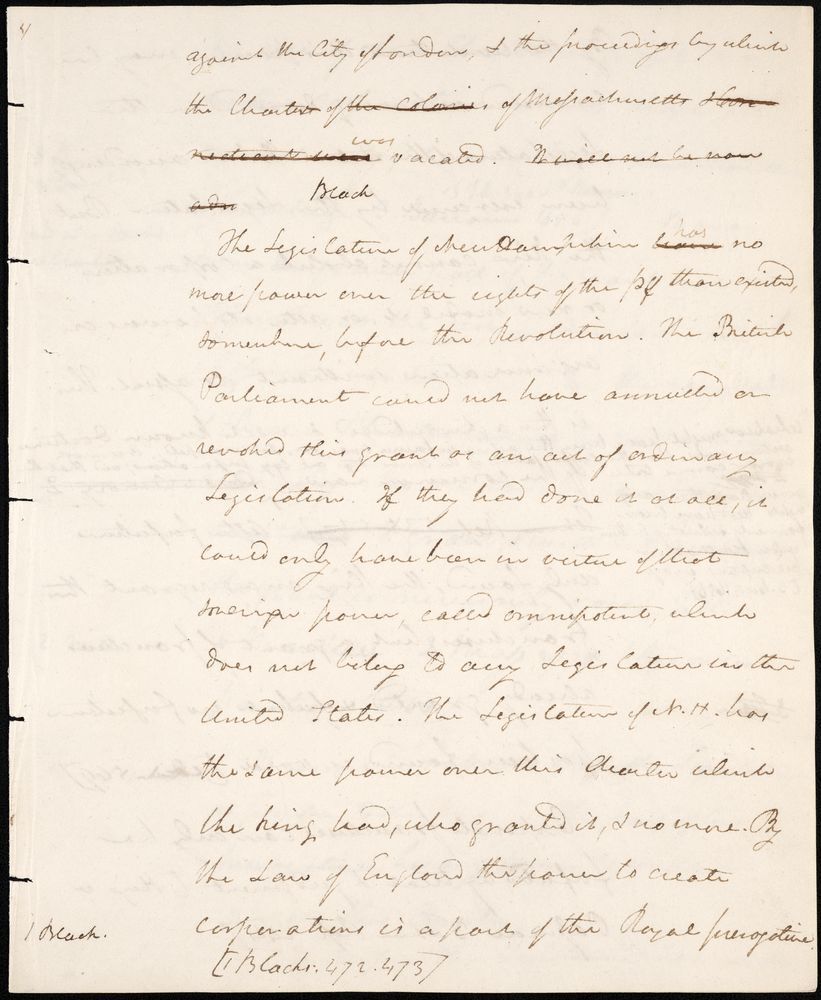
Webster’s Argument
Daniel Webster’s notes that he spoke from during his approximately four hours before the Supreme Court as well as his report from which the final published report of his arguments was made. Webster took a two-pronged approach to his argument, first pointing to English common law to define the Trustees’ rights under the concept of corporate personhood as a charitable body and then to focus the constitutional question related to contracts.
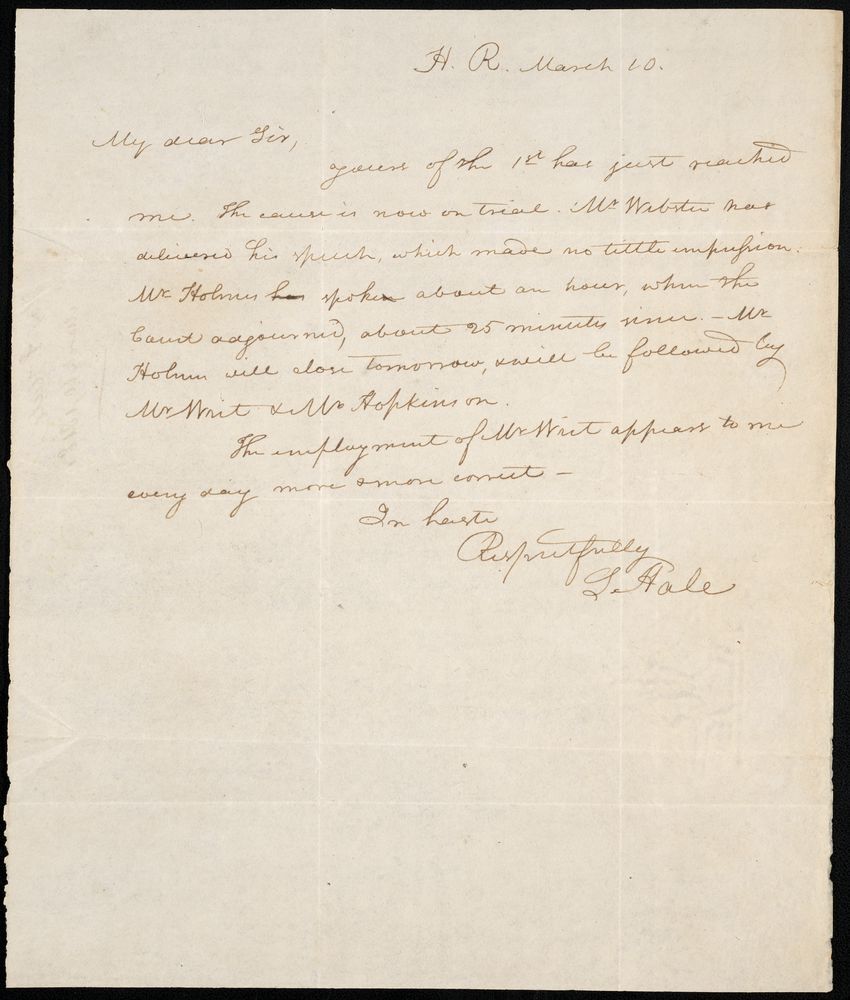
Salma Hale to H.R.
Salma Hale, a supporter of the University, writes that Webster’s argument “made no little impression.” Mentions that Wirt will close the argument the next day followed by Hopkinson. He notes that the employment of Mr. Wirt seems to be a better idea every day; a vailed reference to the fact that many in audience felt that Holmes had missed the mark by focusing solely on the constitutional question.
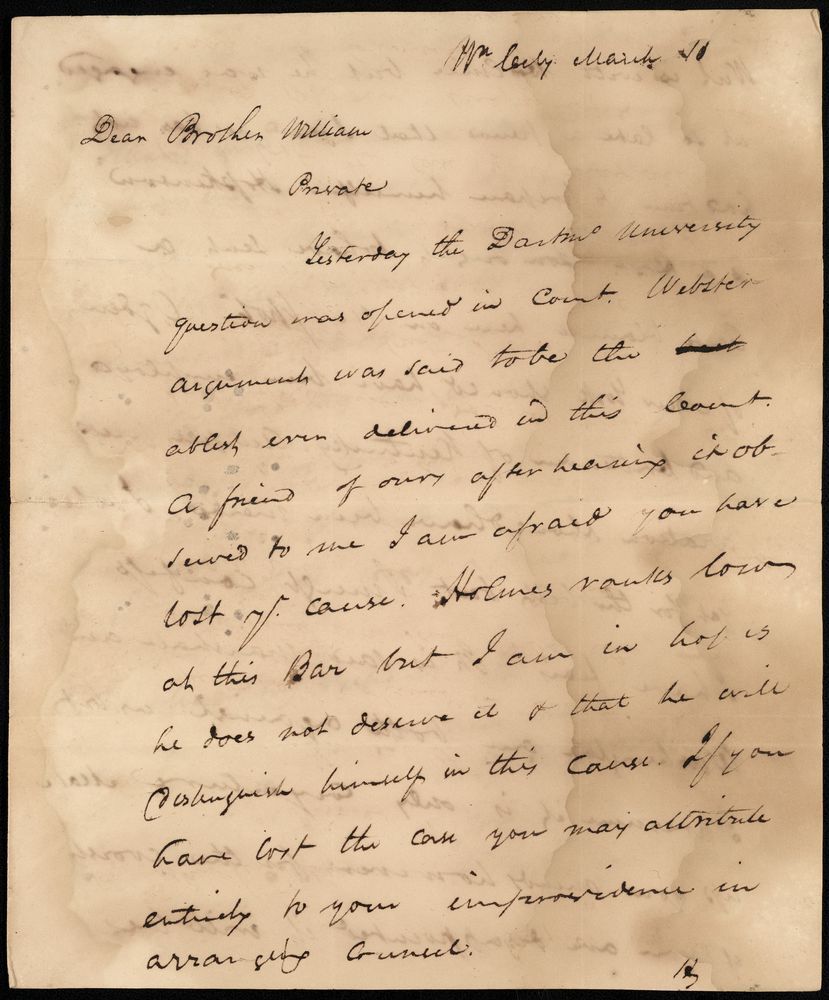
Eleazar Wheelock Ripley to William Allen
Ripley writes to William Allen, President of the University, that Webster bested them with his argument in court. It is clear from this letter and Hale’s letter that the handwriting was on the wall.
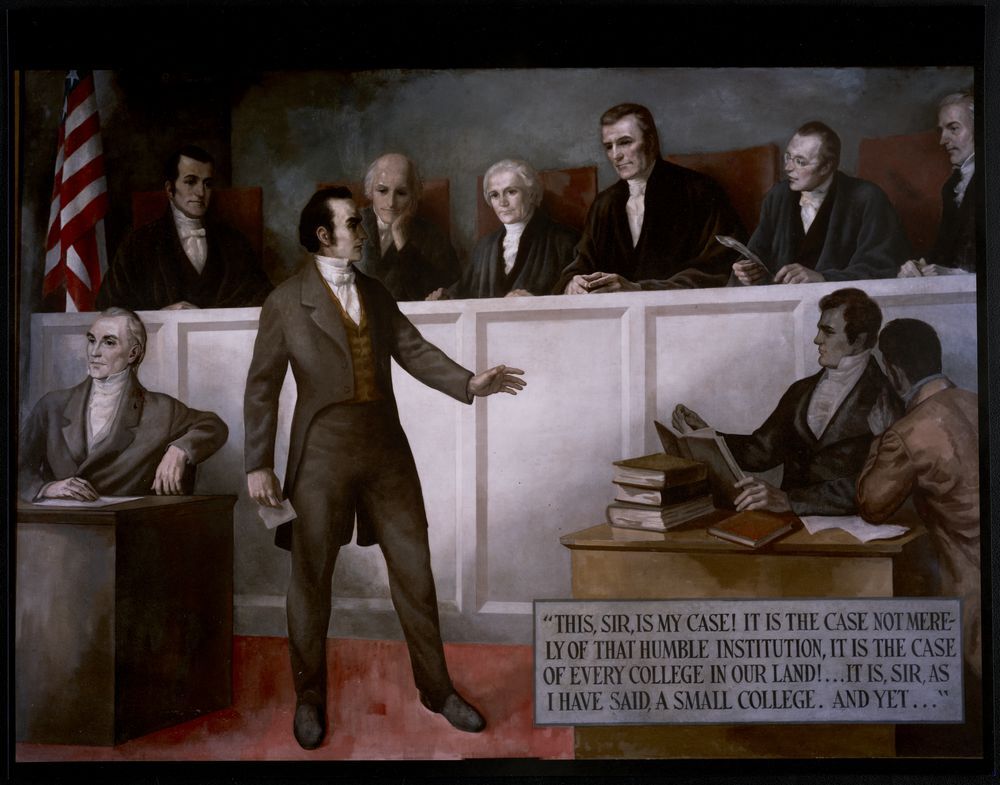
Robert, B. (n.d.). Daniel Webster arguing before the Supreme Court
Original: Hood Museum of Art P.962.86
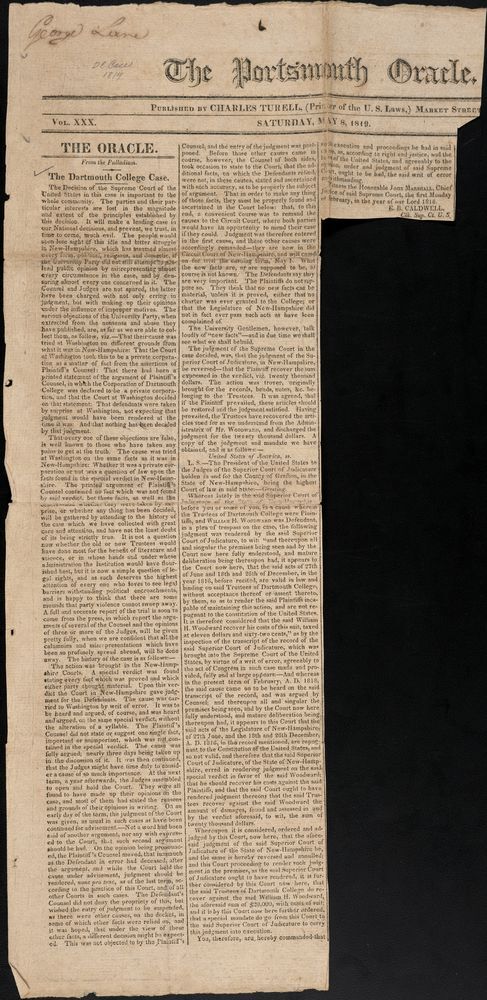
New Hampshire Gazette, February 9, 1819; Connecticut Courant February 16, 1819; The Portsmouth Oracle May 8, 1819; New England Palladium ,April 30, 1819
New Hampshire Gazette, February 9, 1819; Connecticut Courant February 16, 1819; The Portsmouth Oracle, May 8, 1819; New England Palladium, April 30, 1819
